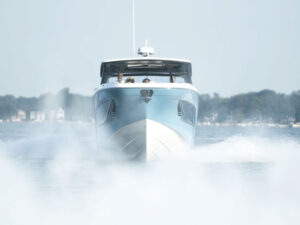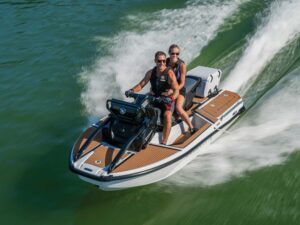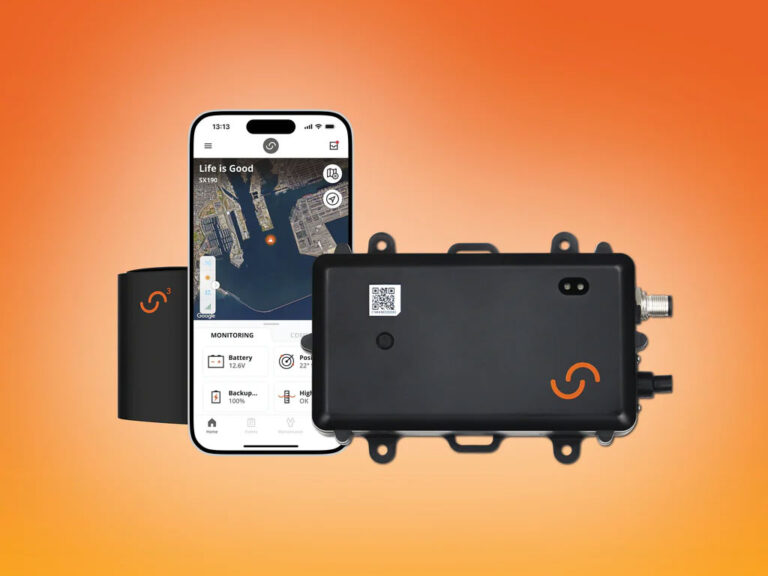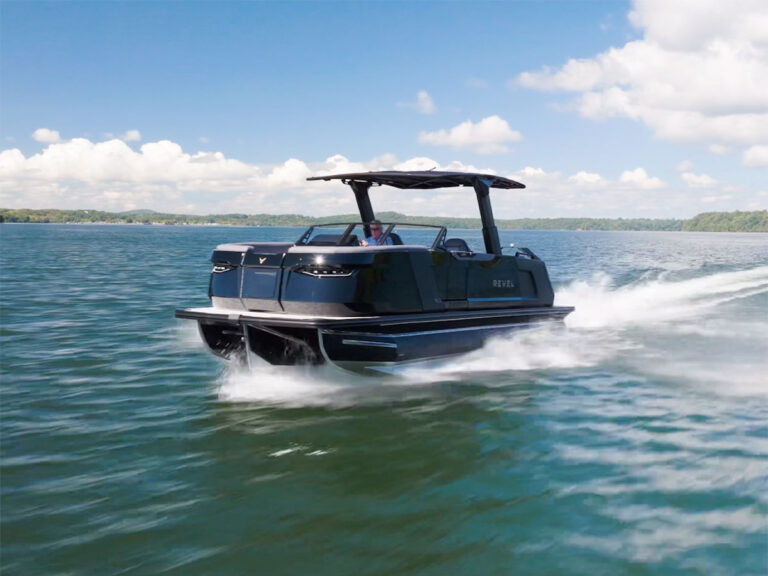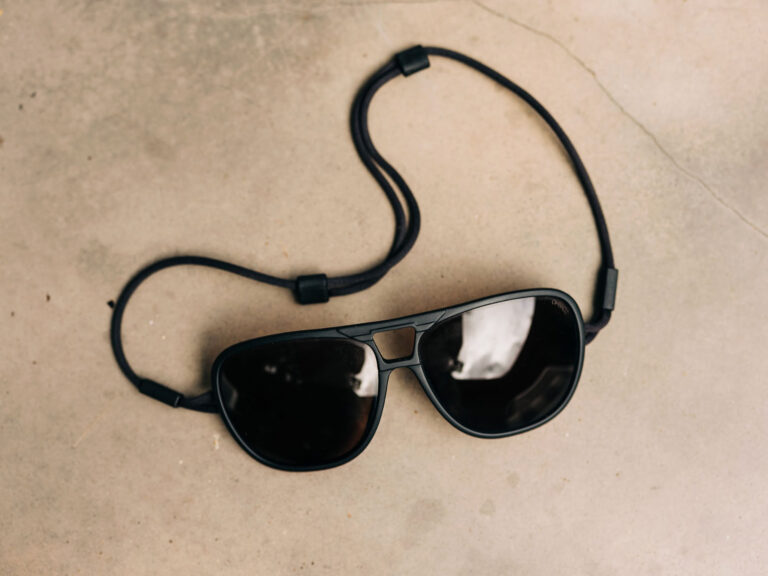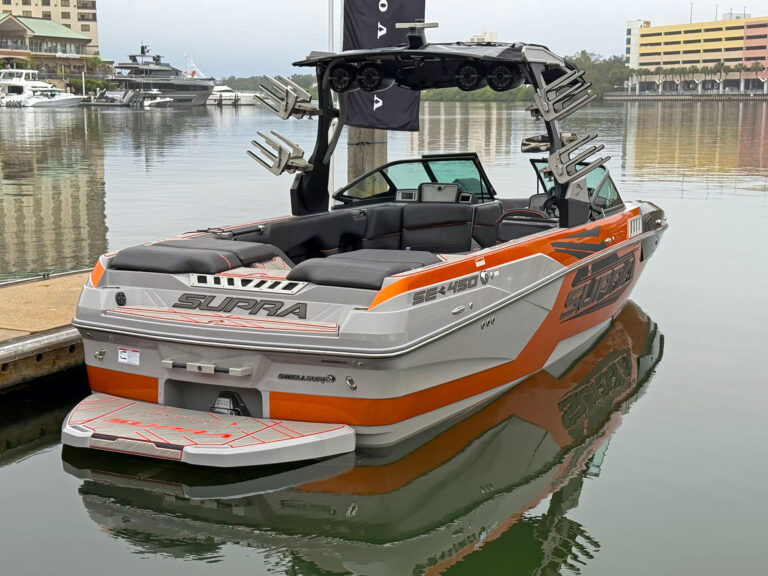
A Type IV throwable device is a specific US Coast Guard-approved class of safety equipment designed to throw to a person in the water. It is intended to be grasped or grabbed, not worn. All recreational powerboats in the US are required to carry at least one approved Type IV device. Additionally, there are other devices that, while not formally approved by the Coast Guard, can be successfully used to save the life of a crewmember who falls overboard.
Horseshoe
Popular for sailboats, horseshoe buoys are Type IV devices that often feature a drogue, or a sea anchor that limits its drift in wind. They are sometimes tethered to a strobe light so the skipper has a bright target to circle back to. Usually, they are dropped astern as soon as a man-overboard (MOB) event occurs. Though clumsy to throw, horseshoe buoys are heavy enough to carry in a breeze, come in two sizes, and can provide up to 40 pounds of buoyancy. They stow in a special rack.
Ring Buoy
Popular on commercial boats, this Type IV device probably is the one that can be thrown with the most distance and accuracy. An MOB grabbing one side almost automatically flips the ring over his or her head, while the grab lines and overall robust nature make it easy to hang on. An attached line allows the rescuer to haul in a victim, even in fairly rough seas. Ring buoys range from 19 to 30 inches in diameter and provide between 19 and 44 pounds of buoyancy.
Throw Cushion
The most popular Type IV device for powerboats, the flotation cushion is easy to stow because it doubles as a seat cushion. It can be tough to throw accurately in any kind of strong breeze. With a line attached, one can haul in a victim, but if the boat is moving or the sea is heaving, the sewn-on handles might not stand up to the strain like the tougher ring. Select a bright color—not white—for the best visibility in choppy conditions. Flotation cushions provide a minimum buoyancy of 18 pounds.
Mustang Rescue Stick
This 14-inch-long baton is not a Coast guard-approved Type IV device, yet it is darn handy. Its shape and heft would make it easy to throw accurately. It inflates automatically upon contact with water and provides 35 pounds of buoyancy, more than most life jackets. Compared to approved devices, it requires an owner inspection and annual rearming in order to work.
Heaving Line
A throw bag or heaving line is a nonapproved device that can prove helpful for rescuing an MOB. It easy to throw with more accuracy than any of the approved types. It can also be used in conjunction with a Type IV by deploying the throw bag after the victim grabs the flotation device. Unlike approved Type IV devices, a heaving line or throw bag provides no buoyancy.
Read Next: Throwable Personal Flotation Devices
Throwing a Type IV Device
Practice throwing your device so you can do so with better accuracy if tragedy strikes. It is not like throwing a ball, an action that many people have developed muscle memory for. You don’t want to hit the victim in the head or face, yet you don’t want them to swim far to reach it. Take the wind into account. Repeat: Practice at the sandbar or cove, or even in your own backyard.


